Electric vehicles (EVs) are no longer reserved for luxury car buyers. With growing demand, better technology, and increasing competition, the cheapest electric car in Australia today offers great value, especially in 2025. Whether you’re looking to reduce fuel costs, cut emissions, or take advantage of government rebates, budget-friendly electric cars are rapidly becoming a go-to choice for Aussie drivers.
Unlike a few years ago, finding an affordable electric car with good range, modern features, and reliable safety ratings is now realistic even with a modest budget. As petrol prices rise and infrastructure improves, even the cheapest electric vehicles are worth serious consideration—especially for city commutes and weekend getaways.
In this guide, we’ll explore the cheapest electric car options available in 2025, compare specs and real-world reviews, and help you decide which budget EV is right for you.
Why Choose an Electric Car in 2025?
In 2025, the cheapest electric car is no longer a compromise—it’s a smart investment. With Australian fuel prices fluctuating and EV infrastructure expanding nationwide, buying an affordable electric vehicle makes more financial and environmental sense than ever before.
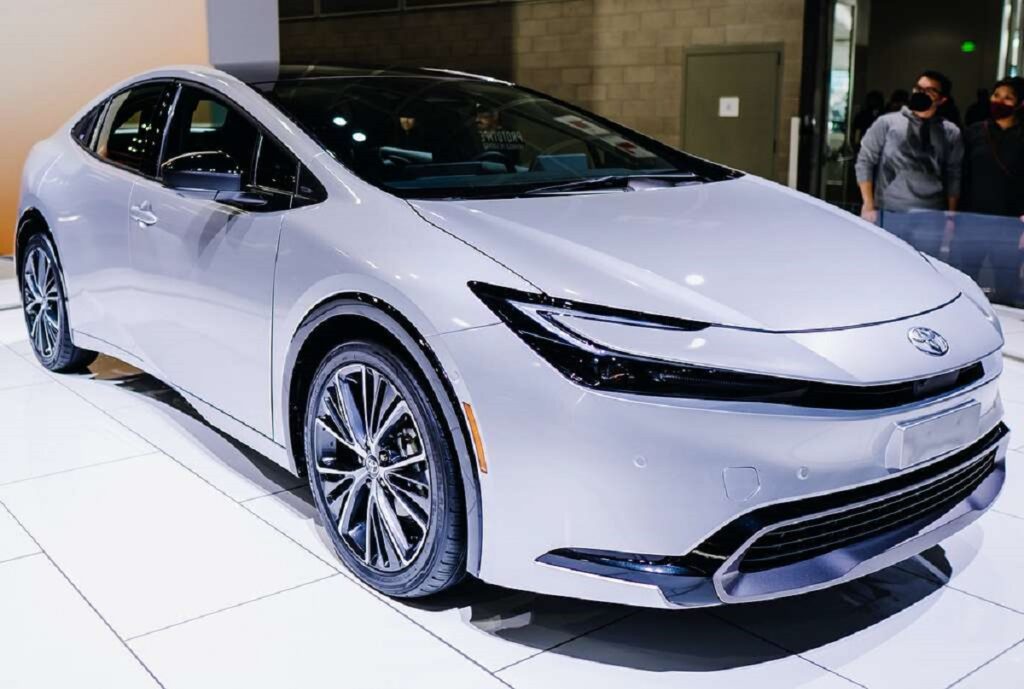
Lower Running Costs
EVs dramatically reduce fuel and maintenance expenses. A full charge often costs less than half the price of a tank of petrol, especially if you charge during off-peak hours or install solar at home. That means the cheapest electric car could save you thousands per year compared to traditional combustion vehicles.
Government Rebates & Incentives
Federal and state-level programs provide upfront discounts and stamp duty exemptions for electric vehicles. These benefits can make even mid-range EVs feel like the most affordable electric cars on the market. For a full breakdown, visit the Service NSW EV rebate guide.
Environmental Benefits
Reducing your carbon footprint is easier with even the cheapest EV cars. They produce zero tailpipe emissions and often score high ANCAP safety ratings, making them ideal for eco-conscious families.
Growing Used EV Market
Thanks to early adopters upgrading to newer models, the second-hand EV market is growing fast. You can now find a reliable cheap electric car for under $30,000 by browsing listings on our Used Cars for Sale in Australia page.
Comparison Table – Cheapest Electric Cars in Australia (2025)
Choosing the cheapest electric car in 2025 isn’t just about finding the lowest price—it’s about getting value for money. Below is a detailed comparison of the top budget EVs available in Australia, comparing price, range, safety, and features to help you make an informed decision.
| Model Name | Starting Price (AUD) | Driving Range (WLTP) | Battery Size | ANCAP Rating | Charging Time (AC) | Best For |
|---|---|---|---|---|---|---|
| MG ZS EV Excite | $44,990 | 320 km | 50.3 kWh | 5 Star | ~7.5 hours | Urban drivers seeking SUV value |
| BYD Dolphin | $38,890 | 340 km | 44.9 kWh | 5 Star | ~6.5 hours | Cheapest new EV in 2025 |
| GWM Ora Standard | $39,990 | 310 km | 48 kWh | 4 Star | ~7 hours | Retro design, modern tech |
| Nissan Leaf (Used) | ~$25,000 (used) | 270 km | 40 kWh | 5 Star | ~8 hours | Proven value in used EV market |
| Renault Zoe (Used) | ~$20,000 (used) | 250 km | 41 kWh | 4 Star | ~6 hours | Cheapest second-hand EV |
| Hyundai Ioniq EV (Used) | ~$28,000 (used) | 311 km | 38.3 kWh | 5 Star | ~6.5 hours | Balanced performance & comfort |
These are some of the cheapest electric cars currently available in Australia for 2025. While the MG ZS EV and BYD Dolphin dominate the new car space, used EVs like the Nissan Leaf and Hyundai Ioniq deliver incredible value under $30K.
To explore current deals and listings, visit our Used Cars for Sale section or check out the latest cars for sale near you.
Top 7 Cheapest Electric Cars – Detailed Reviews
1. BYD Dolphin
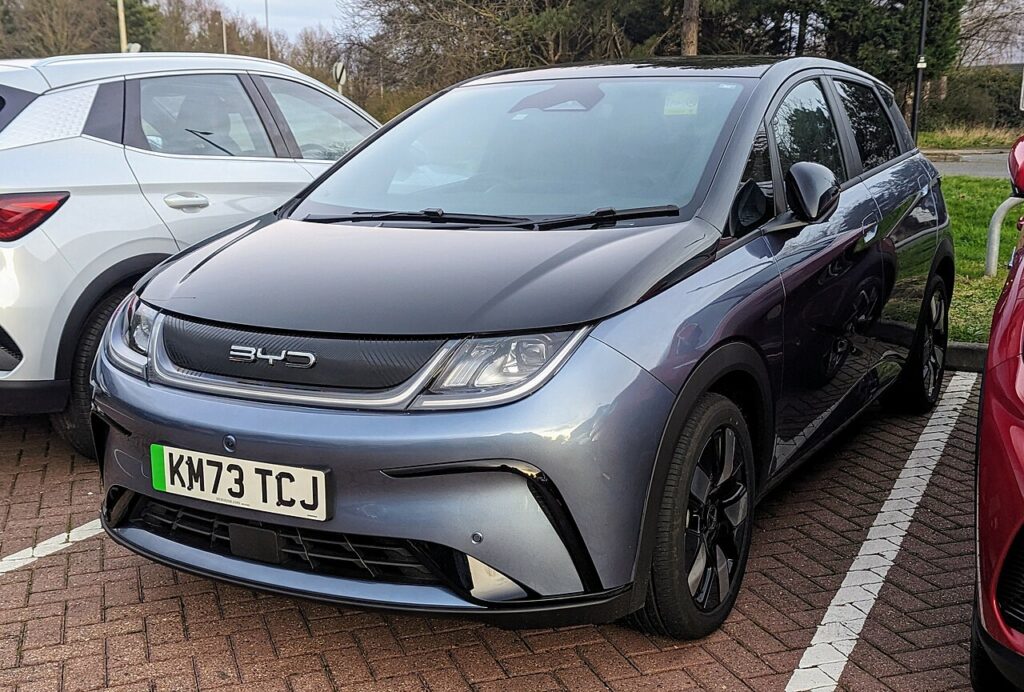
- Price: Starting from $29,990 plus on-road costs
- Range: Up to 340 km (WLTP)
- Battery: 44.9 kWh
- Overview: The BYD Dolphin stands out as Australia’s most affordable new electric car in 2025. Its compact hatchback design is perfect for urban driving, and it offers a comfortable interior with modern features. The Dolphin’s affordability doesn’t compromise on quality, making it an excellent choice for first-time EV buyers.
BYD Dolphin 2025 Overview
The BYD Dolphin is a compact electric hatchback that has garnered attention for its affordability and feature-rich offerings in the Australian market.
Pros and Cons
Pros:
- Affordability: One of the most competitively priced EVs in Australia, making electric mobility more accessible.
- Feature-Rich: Comes equipped with a panoramic glass roof, 12.8-inch rotating touchscreen, and heated front seats even in the base model.
- Safety: Achieved a 5-star ANCAP safety rating under the latest testing protocols.
- Range: Offers a WLTP range of up to 427 km in the Premium variant.
- Warranty: Backed by a 6-year/150,000 km vehicle warranty and an 8-year/160,000 km battery warranty.
Cons:
- Performance: While adequate for city driving, it may not satisfy those seeking high-performance acceleration.
- Interior Materials: Some interior plastics may feel less premium compared to competitors.
- Steering Adjustment: Lacks reach adjustment for the steering wheel, which may affect driving comfort for some users.
BYD Dolphin ANCAP Safety Rating
The BYD Dolphin received a 5-star ANCAP safety rating in 2023, with the following scores:
- Adult Occupant Protection: 89%
- Child Occupant Protection: 86%
- Vulnerable Road User Protection: 85%
- Safety Assist: 77%
These results reflect strong performance in crash protection and the inclusion of advanced safety assist technologies.
Key Features
- Infotainment: 12.8-inch rotating touchscreen with Apple CarPlay and Android Auto compatibility.
- Interior: Heated front seats, synthetic leather upholstery, and a panoramic glass roof.
- Safety: Includes autonomous emergency braking, lane-keeping assist, blind-spot monitoring, and rear cross-traffic alert.
- Performance: Front-wheel drive with power outputs ranging from 70 kW to 150 kW, depending on the variant.
Pricing
New Car Prices (Excluding On-Road Costs):
- Dynamic: $38,890
- Premium: $44,890
- Sport: $49,990
Used Car Prices:
As the BYD Dolphin was introduced to the Australian market in late 2023, the used car market is still developing. However, early estimates suggest that used models may range between $30,000 and $35,000, depending on condition and mileage.
BYD Dolphin Owner Reviews
Owner feedback has been mixed. Some praise the Dolphin for its value and features, while others have raised concerns about reliability and interior quality. For instance, an owner review on Carsales rated the Dolphin 2.2 out of 5, citing reliability issues.
Summary Table
| Aspect | Details |
|---|---|
| Price (New) | $38,890 – $49,990 (excluding on-road costs) |
| Price (Used) | Estimated $30,000 – $35,000 |
| Range | Up to 427 km (WLTP) |
| ANCAP Rating | 5 Stars |
| Power Output | 70 kW – 150 kW |
| Warranty | 6 years/150,000 km vehicle; 8 years/160,000 km battery |
| Key Features | Rotating touchscreen, heated seats, panoramic roof, advanced safety tech |
2. GWM Ora
- Price: From $33,990 drive-away
- Range: Between 310 km to 420 km (WLTP)
- Battery: 48 kWh
- Overview: The GWM Ora, also known as the Ora Funky Cat, combines retro styling with modern electric performance. It offers a spacious interior, advanced safety features, and a competitive range, making it a strong contender in the affordable EV market.
GWM Ora 2025 Overview
The GWM Ora is a compact electric hatchback that has garnered attention for its affordability and feature-rich offerings in the Australian market.

Pros and Cons
Pros:
- Affordability: One of the most competitively priced EVs in Australia, making electric mobility more accessible.
- Feature-Rich: Comes equipped with a 10.25-inch touchscreen, Apple CarPlay and Android Auto compatibility, and a suite of advanced safety features.
- Safety: Achieved a 5-star ANCAP safety rating under the latest testing protocols.
- Range: Offers a WLTP range of up to 420 km in the Extended Range variant.
- Warranty: Backed by a 7-year/unlimited km vehicle warranty.
Cons:
- Performance: While adequate for city driving, it may not satisfy those seeking high-performance acceleration.
- Interior Materials: Some interior plastics may feel less premium compared to competitors.
- Boot Space: At 228 liters, the boot space is smaller than some rivals.
GWM Ora ANCAP Safety Rating
The GWM Ora received a 5-star ANCAP safety rating in 2023, with the following scores:
- Adult Occupant Protection: 92%
- Child Occupant Protection: 84%
- Vulnerable Road User Protection: 74%
- Safety Assist: 93%
These results reflect strong performance in crash protection and the inclusion of advanced safety assist technologies.
Key Features
- Infotainment: 10.25-inch touchscreen with Apple CarPlay and Android Auto compatibility.
- Interior: Synthetic leather upholstery, ambient lighting, and a panoramic sunroof in higher trims.
- Safety: Includes autonomous emergency braking, lane-keeping assist, blind-spot monitoring, and rear cross-traffic alert.
- Performance: Front-wheel drive with a 126kW electric motor, delivering 250Nm of torque.
Pricing
New Car Prices (Drive-Away):
- Standard Range: $35,990
- Extended Range: $40,990
- GT: $46,990
Used Car Prices:
As the GWM Ora was introduced to the Australian market in 2023, the used car market is still developing. However, early estimates suggest that used models may range between $30,000 and $35,000, depending on condition and mileage.
GWM Ora Owner Reviews
Owner feedback has been generally positive. Many praise the Ora for its value and features, while some have noted areas for improvement. For instance, an owner review on CarExpert highlighted the Ora as a “funky little city EV that does its job pretty well,” though also mentioning the need for ongoing software updates.
Summary Table
| Aspect | Details |
|---|---|
| Price (New) | $35,990 – $46,990 (drive-away) |
| Price (Used) | Estimated $30,000 – $35,000 |
| Range | Up to 420 km (WLTP) |
| ANCAP Rating | 5 Stars |
| Power Output | 126 kW |
| Warranty | 7 years/unlimited km vehicle warranty |
| Key Features | Touchscreen infotainment, synthetic leather seats, advanced safety tech |
If you need further details or comparisons with other electric vehicles in the same segment, feel free to ask.
3. MG4
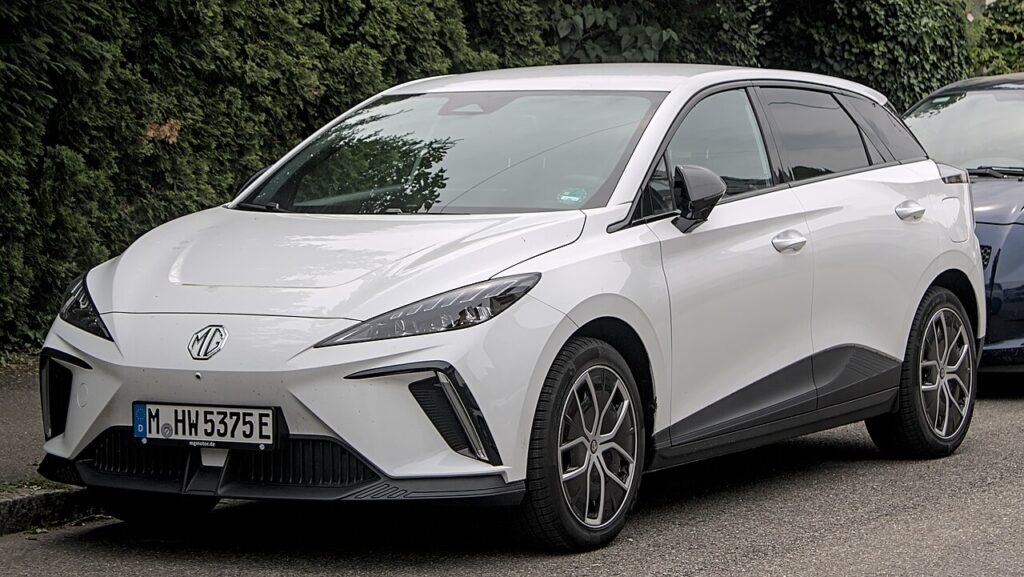
- Price: Starting at $38,990 plus on-road costs
- Range: Up to 450 km (WLTP)
- Battery: 64 kWh
- Overview: The MG4 is a sleek hatchback that offers a balance between performance and affordability. With a spacious cabin, advanced infotainment system, and impressive range, it’s suitable for both city commutes and longer journeys.
MG4 2025 Overview
The MG4 is a compact electric hatchback that has garnered attention for its affordability and feature-rich offerings in the Australian market.
Pros and Cons
Pros:
- Affordability: One of the most competitively priced EVs in Australia, making electric mobility more accessible.
- Feature-Rich: Comes equipped with a 10.25-inch touchscreen, Apple CarPlay and Android Auto compatibility, and a suite of advanced safety features.
- Safety: Achieved a 5-star ANCAP safety rating under the latest testing protocols.
- Range: Offers a WLTP range of up to 530 km in the Long Range variant.
- Warranty: Backed by a 10-year/250,000 km vehicle warranty.
Cons:
- Performance: While adequate for city driving, it may not satisfy those seeking high-performance acceleration.
- Interior Materials: Some interior plastics may feel less premium compared to competitors.
- Boot Space: At 363 liters, the boot space is smaller than some rivals.
MG4 ANCAP Safety Rating
The MG4 received a 5-star ANCAP safety rating in 2022, with the following scores:
- Adult Occupant Protection: 83%
- Child Occupant Protection: 86%
- Vulnerable Road User Protection: 75%
- Safety Assist: 81%
These results reflect strong performance in crash protection and the inclusion of advanced safety assist technologies.
Key Features
- Infotainment: 10.25-inch touchscreen with Apple CarPlay and Android Auto compatibility.
- Interior: Synthetic leather upholstery, ambient lighting, and a panoramic sunroof in higher trims.
- Safety: Includes autonomous emergency braking, lane-keeping assist, blind-spot monitoring, and rear cross-traffic alert.
- Performance: Rear-wheel drive with power outputs ranging from 125kW to 150kW, delivering 250Nm of torque.
MG4 Pricing
New Car Prices (Drive-Away):
- Excite 51: $34,888
- Essence 64: $43,690
- Long Range 77: $49,990
- XPower: $55,990
MG4 Used Car Prices:
As the MG4 was introduced to the Australian market in 2023, the used car market is still developing. However, early estimates suggest that used models may range between $30,000 and $35,000, depending on condition and mileage.
MG4 Owner Reviews
Owner feedback has been generally positive. Many praise the MG4 for its value and features, while some have noted areas for improvement. For instance, an owner review on CarExpert highlighted the MG4 as a “delightful drive” and “still competitively priced,” though also mentioning that cheaper variants are more fun to drive.
Summary Table
| Aspect | Details |
|---|---|
| Price (New) | $34,888 – $55,990 (drive-away) |
| Price (Used) | Estimated $30,000 – $35,000 |
| Range | Up to 530 km (WLTP) |
| ANCAP Rating | 5 Stars |
| Power Output | 125 kW – 150 kW |
| Warranty | 10 years/250,000 km vehicle warranty |
| Key Features | Touchscreen infotainment, synthetic leather seats, advanced safety tech |
4. Hyundai Inster
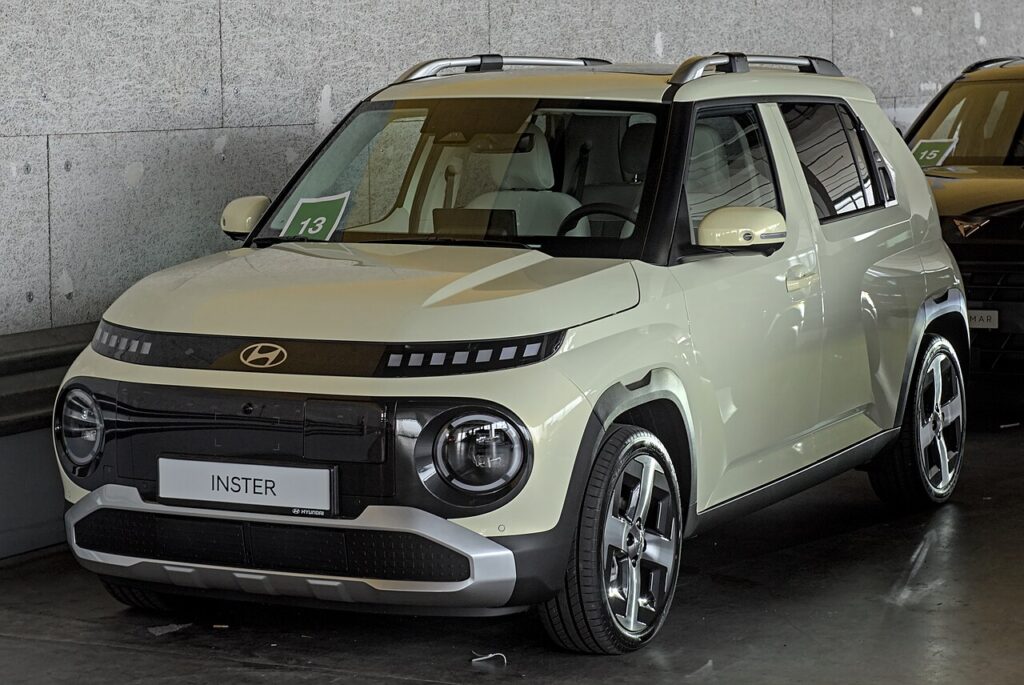
- Price: Estimated around $40,000
- Range: Up to 355 km (WLTP)
- Battery: 49 kWh
- Overview: The Hyundai Inster is a compact SUV designed for urban environments. It offers a modern interior, user-friendly technology, and efficient performance. Its compact size makes parking and maneuvering in city streets effortless.
The 2025 Hyundai Inster is Hyundai’s latest entry into the Australian electric vehicle (EV) market, offering a compact and affordable option for urban drivers.
Pros:
- Affordability: Starting at $39,000, the Inster is positioned as one of the more budget-friendly EVs in Australia.
- Compact Design: Its small footprint makes it ideal for city driving and tight parking spaces.
- Feature-Rich: Despite its size, the Inster comes equipped with dual 10.25-inch displays, wireless charging, and a suite of advanced safety features.
- Fast Charging: Supports DC fast charging up to 120kW, allowing for quick top-ups.
- Warranty: Backed by a 5-year/unlimited km vehicle warranty and an 8-year/160,000 km battery warranty.
Cons:
- Limited Space: With seating for four and a boot space ranging from 280L to 351L, it may not suit larger families or those needing ample cargo room.
- Performance: While adequate for city driving, its acceleration may feel modest compared to some competitors.
- ANCAP Rating: As of now, the Inster has not been tested by ANCAP, so its safety rating is pending.
Hyundai Inster ANCAP Safety Rating:
The Hyundai Inster has not yet been tested by ANCAP, so its safety rating is currently unavailable.
Key Features:
- Infotainment: Dual 10.25-inch digital displays with Apple CarPlay and Android Auto compatibility.
- Interior: Cloth upholstery made from recycled PET plastic, sliding rear seats, and optional heated/ventilated front seats.
- Safety: Includes autonomous emergency braking, lane-keeping assist, blind-spot monitoring, rear cross-traffic alert, and adaptive cruise control with stop-and-go functionality.
- Performance: Front-wheel drive with power outputs ranging from 71.1kW to 84.5kW, delivering 147Nm of torque.
Pricing:
- Standard Range: $39,000
- Extended Range: $42,500
- Cross Variant: $45,000
Used Car Prices:
As the Hyundai Inster is a new model, used car prices are not yet established.
Owner Reviews:
Initial reviews suggest that the Inster is well-received for its affordability and feature set, though some note its limited space and performance as potential drawbacks.
Summary Table:
| Aspect | Details |
|---|---|
| Price (New) | $39,000 – $45,000 |
| Price (Used) | Not yet available |
| Range | 327km – 360km (WLTP) |
| ANCAP Rating | Not yet tested |
| Power Output | 71.1kW – 84.5kW |
| Warranty | 5 years/unlimited km vehicle; 8 years/160,000 km battery |
| Key Features | Dual 10.25-inch displays, wireless charging, advanced safety features |
The Hyundai Inster offers a compelling package for those seeking an affordable and feature-rich electric vehicle tailored for urban environments.
5. Kia EV3
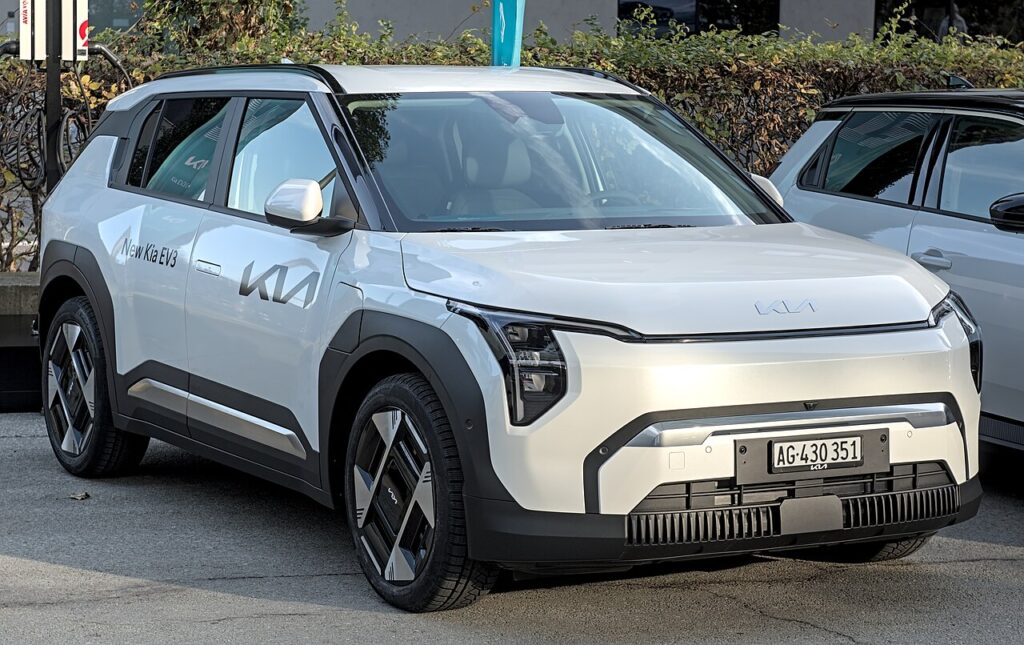
- Price: Starting from $35,000
- Range: Up to 400 km (WLTP)
- Battery: 58.3 kWh
- Overview: The Kia EV3 is a subcompact crossover SUV that combines style with practicality. It features a comfortable interior, advanced safety systems, and a respectable range, making it suitable for daily commutes and weekend getaways.
Kia EV3 – Budget-Friendly EV SUV with Long Range
The Kia EV3 enters the Australian market in 2025 as a compact electric SUV aiming to deliver value, safety, and range in a smart package. For those looking to combine practicality with low operating costs, this model could qualify as the cheapest electric car in its category by long-distance range and features.
Pros
- Affordable for a new long-range EV: Starting under $48,000, it’s competitive among compact SUVs.
- Impressive range: Offers up to 604 km (WLTP) in the Long Range variant—exceptional in the affordable segment.
- Feature-packed: Dual 12.3-inch displays, wireless Apple CarPlay and Android Auto, adaptive cruise control.
- Warranty coverage: 7-year/unlimited km vehicle warranty adds peace of mind for cost-conscious buyers.
Cons
- Not ANCAP tested yet: The 2025 Kia EV3 does not yet have an official ANCAP safety rating.
- Rear seat comfort: May feel cramped for taller passengers.
- Mild acceleration: Prioritizes efficiency over sporty performance.
Kia EV3 Pricing (Drive-Away)
- Air Standard Range: $47,600
- Air Long Range: $53,315
- Earth Long Range: $58,600
- GT-Line Long Range: $63,950
Used prices are not yet available due to its recent release.
Range and Performance
- Battery: Up to 81.4kWh
- Driving Range: Up to 604 km (WLTP)
- Motor: 150kW front-wheel drive
- Torque: 283Nm
Reliability and Safety Features
The Kia EV3 includes blind spot detection, lane centering, emergency braking, and rear cross-traffic alert. While reliability ratings are pending from large-scale Australian buyers, Kia’s EV platform has performed well in previous models like the EV6.
If you’re seeking the cheapest electric car that doesn’t compromise on tech, warranty, or range, the EV3 may be your next best move—especially for regional driving.
To compare its pricing and used alternatives, visit the Best Used Cars in Australia and Top Deals
Need help planning your EV purchase timeline? See Best Time to Buy a Used Car – Tips for Savvy Shoppers
Summary Table:
| Aspect | Details |
|---|---|
| Price (New) | $47,600 – $63,950 |
| Price (Used) | Not yet available |
| Range | Up to 604 km (WLTP) |
| ANCAP Rating | Not yet tested |
| Power Output | 150 kW |
| Warranty | 7 years/unlimited km vehicle warranty |
| Key Features | Dual 12.3-inch displays, wireless Apple CarPlay and Android Auto, advanced safety features |
The EV3 bridges the gap between budget and performance, helping define a new tier of the cheapest electric car options for Aussie families.
6. MG ZS EV
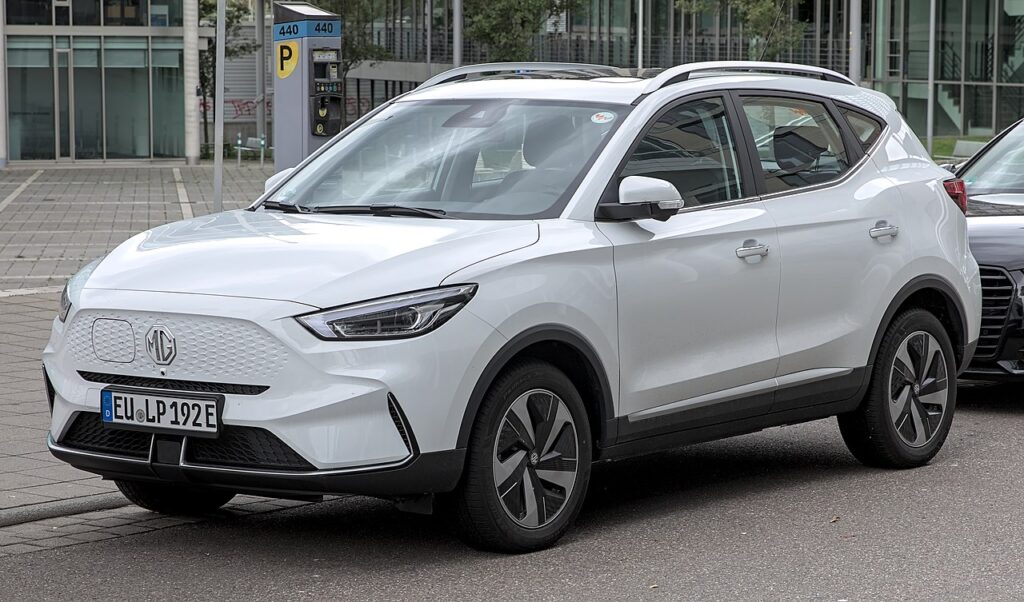
- Price: From $44,990 drive-away
- Range: Up to 320 km (WLTP)
- Battery: 50.3 kWh
- Overview: The MG ZS EV is a compact SUV that offers value for money. It comes with a spacious interior, user-friendly infotainment system, and a comfortable ride, making it a practical choice for families.
Certainly! Here’s a comprehensive overview of the 2025 MG ZS EV tailored for the Australian market, incorporating the focus keyword cheapest electric car and providing detailed specifications, features, and pricing.
2025 MG ZS EV: Australia’s Affordable Electric SUV
The 2025 MG ZS EV continues to solidify its position as one of Australia’s most accessible electric vehicles. With competitive pricing and a suite of features, it appeals to both first-time EV buyers and those seeking value without compromising on quality.
Key Specifications
- Powertrain: 130kW electric motor delivering 280Nm of torque
- Drivetrain: Front-wheel drive
- Battery Options:
- Standard Range: 51.1kWh battery offering up to 320 km (WLTP)
- Long Range: 72.6kWh battery offering up to 440 km (WLTP)
- Charging:
- AC Charging: Up to 11kW
- DC Fast Charging: Up to 80kW
MG ZS Pricing (Drive-Away)
- Excite: $39,990
- Essence: $43,990
- Long Range: $46,990
Note: Prices are subject to change and may vary based on location and dealer offers.
Features
- Infotainment: 10.1-inch touchscreen with Apple CarPlay and Android Auto
- Safety: Autonomous Emergency Braking, Lane Keep Assist, Blind Spot Monitoring, Rear Cross Traffic Alert
- Interior: Synthetic leather upholstery, panoramic sunroof (Essence and Long Range variants)
- Warranty: 7-year/unlimited km vehicle warranty; 8-year/160,000 km battery warranty
ANCAP Safety Rating
The MG ZS EV received a 5-star ANCAP safety rating in 2019. It’s important to note that safety standards have evolved, and newer models may be assessed under more stringent criteria.
Summary Table
| Feature | Specification |
|---|---|
| Price (Drive-Away) | $39,990 – $46,990 |
| Battery Capacity | 51.1kWh / 72.6kWh |
| Range (WLTP) | Up to 440 km |
| Power Output | 130kW |
| Torque | 280Nm |
| Charging | AC: 11kW / DC: 80kW |
| Safety Rating | 5-Star ANCAP (2019) |
| Warranty | 7 years/unlimited km (vehicle) |
| 8 years/160,000 km (battery) |
The 2025 MG ZS EV stands out as a compelling option for those seeking the cheapest electric car in Australia without sacrificing essential features and safety. Its combination of affordability, range, and practicality makes it a strong contender in the growing EV market.
7. Nissan Leaf (Used)
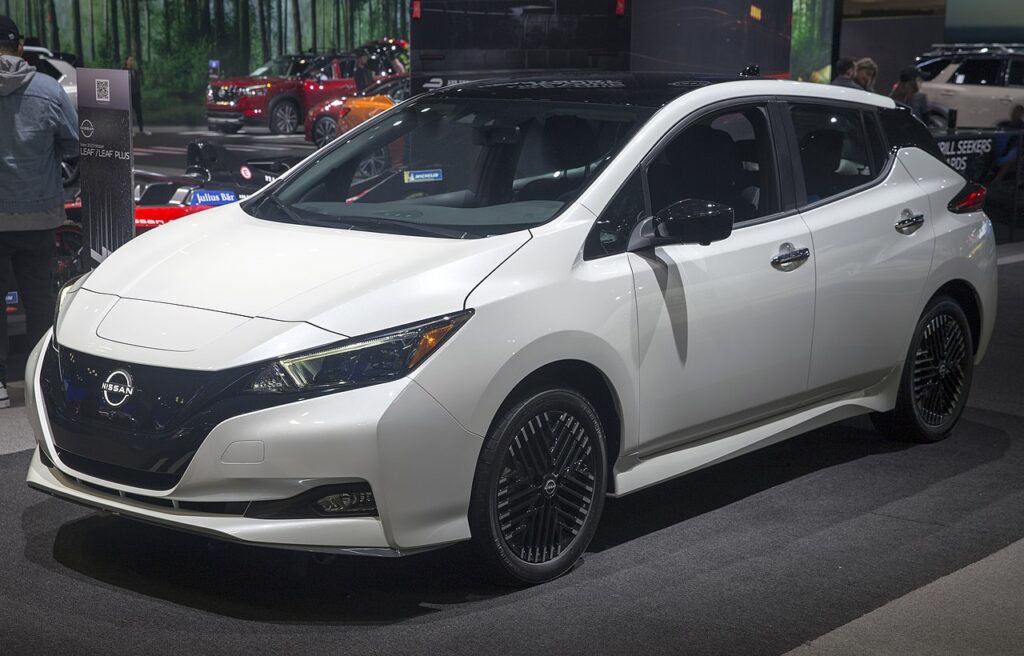
- Price: Approximately $25,000 (used)
- Range: Up to 270 km (WLTP)
- Battery: 40 kWh
- Overview: The Nissan Leaf has been a pioneer in the electric vehicle market. Opting for a used Leaf can be a cost-effective way to own an EV, offering reliability and a proven track record. It’s ideal for city driving and short commutes.
The 2025 Nissan Leaf marks a significant evolution in Nissan’s electric vehicle lineup, transitioning from a hatchback to a sleek crossover SUV. Built on the CMF-EV platform, shared with the Nissan Ariya, the new Leaf is designed to offer enhanced aerodynamics, increased interior space, and a substantial improvement in driving range.
Key Specifications
- Platform: CMF-EV (Common Module Family – Electric Vehicle)
- Body Style: Crossover SUV
- Drivetrain: Front-wheel drive
- Battery Options:
- Standard Range: Approximately 66 kWh
- Extended Range: Approximately 91 kWh
- Estimated Range: Up to 600 km (WLTP)
- Charging:
- AC Charging: Up to 11 kW
- DC Fast Charging: Up to 130 kW
Features
- Interior:
- Spacious cabin with increased legroom and cargo space
- High-quality materials and finishes
- Advanced infotainment system with a large touchscreen display
- Safety:
- Advanced Driver Assistance Systems (ADAS)
- Autonomous Emergency Braking (AEB)
- Lane Departure Warning (LDW)
- Blind Spot Monitoring (BSM)
- Connectivity:
- Wireless Apple CarPlay and Android Auto
- Over-the-air (OTA) software updates
- Integration with NissanConnect services
Nissan leaf Pricing and Availability
- Estimated Starting Price: Approximately $50,000 AUD (subject to change upon official release)
- Australian Launch: Expected in mid-2026
Summary Table
| Feature | Specification |
|---|---|
| Platform | CMF-EV |
| Body Style | Crossover SUV |
| Drivetrain | Front-wheel drive |
| Battery Options | ~66 kWh (Standard), ~91 kWh (Extended) |
| Estimated Range | Up to 600 km (WLTP) |
| Charging | AC: Up to 11 kW, DC: Up to 130 kW |
| Safety Features | AEB, LDW, BSM, ADAS |
| Connectivity | Wireless Apple CarPlay, Android Auto, OTA |
| Starting Price | ~$50,000 AUD |
| Availability | Mid-2026 in Australia |
The 2025 Nissan Leaf’s transformation into a crossover SUV aligns with the growing consumer preference for higher-riding vehicles that offer practicality without compromising efficiency. With its anticipated range exceeding 500 km, the new Leaf positions itself as a competitive option in the electric SUV market, offering a blend of performance, technology, and sustainability.
Note: All specifications and features are based on available information as of May 2025 and are subject to change upon official release.
Used vs New – What’s Better for Budget EV Buyers?
When shopping for the cheapest electric car in Australia, one of the biggest decisions is whether to buy new or go with a second-hand EV. While new models offer the latest tech and warranty peace of mind, used electric cars can save you thousands—and many still have years of battery life left.
Buying a New Electric Car
New EVs like the BYD Dolphin or MG4 are becoming increasingly affordable. They often qualify for government rebates and offer cutting-edge safety and infotainment systems. New vehicles also come with full warranties, including battery coverage (often 8 years), making them a solid long-term investment.
However, even the cheapest electric car in the new segment can still cost over $30,000–$40,000 after on-road costs, which may stretch your budget.
Going for a Used EV
Used EVs—like the Nissan Leaf or Hyundai Ioniq—can be found for under $30,000. Many of these models are still in excellent condition with minimal wear due to the simpler mechanics of electric drivetrains.
Websites like AusCarSales Used Listings frequently showcase well-priced used electric vehicles that compete head-to-head with new budget options. If your top priority is to own the cheapest electric car, this is where to start.
Key Considerations for Used EVs
- Battery health: Always check State of Health (SOH) before buying
- Charging compatibility: Ensure it supports common ports in Australia
- Software updates: Older EVs may lack newer features or app support
- Rebates: Most state incentives don’t apply to used EVs
Verdict:
- Choose new if: You want warranty coverage, latest tech, and rebates
- Choose used if: Budget is tight, and you’re looking for the absolute cheapest electric car with decent specs
Tips for Buying the Cheapest Electric Car in Australia
Buying the cheapest electric car can be a smart financial move, but without the right preparation, you might miss key savings or overlook crucial details. Here are the most practical, Australia-specific tips to help you confidently find and buy the right budget EV.
1. Set a Realistic Budget (All Costs Included)
While some new EVs start under $40,000, remember to factor in on-road costs, charging station setup (if needed), and optional upgrades. If you’re aiming for the cheapest electric car, consider models with low service costs and good resale value. You can explore current pricing trends and deals on our Best Cars Under $10K in Australia page for budget benchmarks.
2. Inspect Battery Health for Used EVs
For second-hand EVs, always check the State of Health (SOH) of the battery. This gives you an idea of current battery capacity compared to when the car was new. The battery is the heart of an electric vehicle, and replacing it is expensive—so this step is critical when choosing a cheap electric car on the used market.
3. Prioritise Practical Range for Your Driving Needs
If you only drive within your city or suburb, you may not need more than 250–300 km of range. This opens the door to models like the GWM Ora or a used Nissan Leaf—still among the cheapest electric cars that meet basic daily needs.
4. Use Filters When Searching for EVs Online
To narrow your search quickly, use filters like “fuel type: electric,” price limits, and model years on AusCarSales’ car listings. This helps you avoid wasting time and focus only on affordable EVs that match your budget and lifestyle.
5. Don’t Overpay for Features You Don’t Need
While it may be tempting to go for the latest tech, you might find the cheapest electric car that suits your needs with just the basics: good range, safety features, and comfortable seating. Focus on value, not just flash.
6. Compare Listings Before You Commit
Prices vary dramatically by region, dealer, and model year. Use our marketplace to compare deals, or visit the 20 Best Places to Buy a Used Car in Australia to make smarter choices before signing anything.
7. Understand Financing and Warranty Options
Many new EVs come with extended battery warranties. If you’re financing your purchase, make sure the interest rates don’t eliminate the savings of driving a cheap EV. Check for certified used programs when buying second-hand to reduce risk.
Cheapest Electric Car by Use Case – Which One Fits You Best?
Not every driver is the same—and neither is every EV. Choosing the cheapest electric car depends heavily on your lifestyle, driving habits, and preferences. In this section, we break down the best affordable electric car options in Australia by specific use cases so you can make a more personalized and cost-effective choice.
Best Cheap Electric Car for City Driving
Winner: BYD Dolphin
- Compact, easy to park, and quick off the mark in traffic
- 340 km range is more than enough for weekly metro commutes
- One of the lowest starting prices on the market
If your driving is mostly local, the cheapest electric car for city use is hands down the BYD Dolphin. Its size and price make it ideal for navigating inner-city areas without worrying about high fuel costs or tight parking spots.
For more small and economical options, visit our guide to the Best Small Cars to Buy – Economical and Reliable.
Best Cheap Electric Car for Families
Winner: MG ZS EV Excite
- Spacious enough for small families
- 5-star ANCAP safety rating
- SUV practicality with affordable pricing
The MG ZS EV offers the space and security families need, without stretching the budget. If you’re looking for the cheapest electric car that still accommodates child seats, groceries, and prams—this SUV should be high on your list.
You can also see how it stacks up against others in our article on the 5 Best Family Cars for Long Distance Travel in 2025.
Best Cheap EV for Long-Distance Travel
Winner: MG4 Excite 64kWh
- Range up to 450 km on a single charge
- Hatchback form factor but long-distance power
- Advanced driver assistance systems for highway cruising
While it’s slightly pricier than the absolute bottom-tier models, the MG4 still qualifies as an affordable electric car given its impressive range and features. If your regular trips include highway runs, this is your best bet under $45K.
Planning road trips? Read our full analysis on Best Cars for Long Distance Travel in Australia.
Best Second Car (Low Daily Use)
Winner: Renault Zoe (Used)
- Cheapest second-hand EV on the market
- Easy to maintain and operate
- Ideal for errands, school runs, and short trips
For households looking to add an electric vehicle as a second car, the Renault Zoe offers incredible value. As one of the cheapest electric cars in Australia’s used market, it serves reliably without the financial strain of a new purchase.
We covered more on second-hand reliability in 5 Best Reliable Used Cars Under $10K.
Cheapest EV with Low Insurance Cost
Winner: Hyundai Ioniq Electric (Used)
- Proven record of low claim risk
- Consistent resale value
- Cheaper comprehensive premiums than other EVs
Insurance on EVs can vary widely. Among affordable options, the Hyundai Ioniq typically ranks lower in risk categories, which translates to cheaper premiums—making it one of the best options for overall cost-conscious ownership.
You may also be interested in How to Manage Car Insurance Claims – Step-by-Step Guide.
This breakdown helps illustrate that there is no one-size-fits-all when it comes to the cheapest electric car. Your best option depends not just on price, but on how you plan to drive it.
Cheapest Electric Car Ownership Costs in Australia – What to Expect
Owning the cheapest electric car goes beyond the purchase price. You’ll want to understand how much it actually costs to run, maintain, and keep on the road. Here’s a detailed breakdown of what it really costs to own a budget EV in Australia in 2025.
Car Charging Costs (Home vs Public)
Electricity is significantly cheaper than petrol. On average:
- Home charging (off-peak rate): $0.25/kWh
- Public fast charging: $0.40–$0.60/kWh
For a cheapest electric car like the BYD Dolphin with a 44.9 kWh battery:
- Home charge cost: ~$11 per full charge
- Range: ~340 km
- Cost per 100 km: ~$3.20
That’s less than one-tenth the cost of fueling a petrol car for the same distance.
Want to reduce fuel costs even more? Learn from our guide: How to Find the Cheapest Fuel in Australia
EV Maintenance and Servicing
Electric cars have fewer moving parts. No oil changes. No spark plugs. No timing belts.
Typical annual service costs:
- Petrol cars: $600–$900
- EVs: $250–$400
Models like the MG ZS EV and Nissan Leaf are among the lowest maintenance EVs, keeping ownership costs minimal. If you’re shopping for the cheapest electric car to own long-term, this cost difference adds up quickly.
Need help maintaining your EV’s battery? Read our resource on Tips for Maintaining Your Car’s Battery Life
Electric Car Depreciation and Resale Value
EVs used to depreciate faster than petrol cars—but that’s changing. As electric infrastructure improves and second-hand demand rises, models like the Hyundai Ioniq and MG4 are showing solid resale performance.
Depreciation rates (over 5 years):
- Entry-level petrol car: ~45–50%
- Budget EV like MG4: ~35–40%
- Used Nissan Leaf: ~30% (already depreciated)
The cheapest electric car can actually hold value better if purchased used, due to slower ongoing depreciation.
Learn how to minimize value loss in Understanding Car Depreciation – Maximise Resale
EV Registration and Road Costs
Some states offer:
- Discounted EV registration
- Stamp duty exemptions
These benefits are typically available for new EVs under a certain price cap (e.g. $68,000 in NSW). Many of the cheapest electric cars easily qualify for these savings.
Want to time your car purchase right? Read Best Time to Buy a Used Car – Tips for Savvy Shoppers
Combined, these factors make EV ownership far more affordable than most assume. Choosing the cheapest electric car isn’t just about getting a low price—it’s about enjoying ongoing savings year after year.
What to Avoid When Buying a Cheap Electric Car?
Buying the cheapest electric car can be a smart decision—but not if you fall into common traps. Many buyers overlook essential factors that can lead to regret, unexpected costs, or poor long-term performance. Here’s what to watch out for when shopping for a budget EV in Australia.
1. Ignoring Battery Health on Used EVs
The battery is the most expensive component of an electric vehicle. If you’re buying a second-hand EV, always check the battery’s State of Health (SOH). A healthy battery should retain at least 80% of its original capacity. Avoid any listing that doesn’t provide battery health diagnostics.
For a reliable used car checklist, refer to our guide on how to avoid mistakes when buying: Common Mistakes to Avoid When Buying a Used Car
2. Falling for Grey Imports
Some dealers offer imported EVs at lower prices—but many of these are grey imports. These vehicles may lack local warranty support, certified repair access, and compatibility with Australian charging networks. Stick to Australian-delivered models whenever possible.
3. Overpaying for Old Tech
Just because it’s cheap doesn’t mean it’s worth it. Older EVs from 2012–2016 often lack modern range, safety, and compatibility with new charging standards. Don’t compromise usability for price. The cheapest electric car should still meet your practical needs today and a few years from now.
4. Ignoring Local Support and Spare Parts
Make sure the brand has active support in Australia. Some imported EV brands have limited service centres or longer wait times for parts, which can affect your experience and resale value.
5. Skipping On-Road Cost Calculations
A car listed at $39,990 might seem like the cheapest electric car in its class, but without including stamp duty, registration, and insurance, you might exceed your budget. Always calculate the drive-away price.
You can explore transparent pricing and drive-away listings at Sell Your Car Online with AusCarSales – Hassle-Free Solutions
6. Ignoring Charging Compatibility
Not all EVs use the same plugs. Make sure the vehicle supports Type 2 (AC) and CCS (DC fast charging) ports, which are standard in Australia. Outdated charging types can lead to limited usability and higher costs.
Hidden Gems – Cheapest EVs by Niche Segment
In this section, we’ll explore some of the most affordable electric vehicles (EVs) in Australia for 2025, focusing on specific niches and use cases. This will help you identify the best options tailored to your needs.
Best Small Electric Car: Hyundai Inster
The Hyundai Inster, also known as the Casper Electric in some markets, is a compact EV designed for urban environments. With a starting price under $40,000, it offers a range of up to 355 km and features like quick charging capabilities, making it ideal for city dwellers seeking an affordable and efficient vehicle.
Cheapest 300-Mile EV: Kia EV3 Long Range
The Kia EV3 Long Range variant provides an impressive range of up to 600 km, making it one of the most affordable EVs with such extensive range capabilities. Priced under $50,000, it combines practicality with advanced features, catering to those who require longer driving distances without frequent charging stops.
Cheapest Used Electric Car: Nissan Leaf
For those considering second-hand options, the Nissan Leaf stands out as a reliable and cost-effective choice. With used models available under $30,000, it offers a range of up to 270 km and benefits from a well-established service network in Australia.
Cheapest Electric SUV: MG S5 EV
The MG S5 EV, also known as the MG ES5 in some regions, is a compact crossover SUV offering a balance between affordability and functionality. With a starting price around $40,000, it provides a range of up to 525 km, making it suitable for families and those needing extra space.
Cheapest Plug-In Hybrid: BYD Shark 6
The BYD Shark 6 is a plug-in hybrid vehicle combining electric and petrol power, offering flexibility for various driving conditions. Priced at approximately $60,000, it caters to those seeking an affordable entry into hybrid technology with the added benefit of extended range.
Charging on a Budget – Cheapest EV Charging Options in Australia
Owning the cheapest electric car is just the beginning. To truly maximize savings, understanding the most cost-effective charging options available in Australia is essential. Here’s a comprehensive guide to help you navigate the landscape of EV charging in 2025.
Home Charging: The Most Economical Choice
Charging your EV at home remains the most affordable option. Depending on your electricity plan, costs can vary:
- Off-peak rates: Charging during off-peak hours can cost as low as $0.20 to $0.30 per kWh. For a standard 55kWh battery, this translates to approximately $11 to $16 for a full charge.
- Solar integration: Utilizing solar panels can further reduce costs. Charging your EV using solar energy can bring the cost down to nearly zero, especially if charging during peak sunlight hours.
It’s important to consult with your energy provider to explore time-of-use plans that offer lower rates during specific periods.
Public Charging: Convenience at a Cost
While public charging stations offer convenience, they come at a higher price:
- Fast chargers: Typically range from $0.40 to $0.70 per kWh. For a 60kWh battery, expect to pay between $24 and $42 for a full charge.
- Network variations: Different charging networks have varying rates. For instance, some networks offer membership plans that provide discounted rates.
It’s advisable to plan your routes and identify charging stations in advance to avoid unexpected costs.
Government Incentives and Rebates
The Australian government offers various incentives to promote EV adoption:
- Rebates: Some states provide rebates for the installation of home charging stations, which can offset initial setup costs.
- Tax benefits: Certain EV models are eligible for tax exemptions, reducing the overall cost of ownership.
Staying informed about available incentives in your region can lead to significant savings.
Tips for Cost-Effective Charging
- Monitor energy rates: Keep an eye on electricity prices and adjust your charging schedule accordingly.
- Utilize apps: Use mobile applications to locate the most affordable charging stations along your route.
- Regular maintenance: Ensure your EV and charging equipment are well-maintained to optimize efficiency.
By strategically managing your charging habits and taking advantage of available resources, you can significantly reduce the operational costs of your EV.
Conclusion. Which Cheapest Electric Car Should You Buy?
The EV market in Australia is evolving fast, and for 2025, buyers have more access to affordable electric vehicles than ever before. Whether you’re after a new compact hatch or a used family-friendly SUV, the cheapest electric car for your needs is now within reach.
Here’s a quick summary of our top picks by category:
- Overall Cheapest New EV: BYD Dolphin
- Best for Families: MG ZS EV
- Longest Range for the Price: MG4 Excite 64kWh
- Best Used EV Under $30K: Nissan Leaf
- Best City EV: Renault Zoe
- Lowest Ownership Cost: Hyundai Ioniq (used)
The affordability of these vehicles isn’t just in their purchase price—but in their fuel savings, maintenance costs, and eligibility for registration discounts. For many Australians, owning an electric vehicle is no longer just an environmental choice—it’s a financially smart one.
If you’re preparing to buy or sell, start with confidence by browsing available electric cars on our platform. You can find great deals and list your vehicle easily at:
- Sell Your Car Online in Australia – AusCarSales
- Browse All Used EV Listings
- Compare the Best Fuel-Efficient Cars Under $10K
- Top Cars for Travelling Around Australia
- Australia’s Number One Selling Car
- Review of the Kia EV6 2025
- The Decline in Electric Vehicle Sales in Australia
This guide has covered everything from use cases to real ownership costs, top-performing models, and the traps to avoid—designed to help you find the cheapest electric car that fits your budget and lifestyle.
Frequently Asked Questions (FAQs) About the Cheapest Electric Car in Australia
What is the cheapest electric car available in Australia right now?
As of 2025, the BYD Dolphin holds the title for the cheapest electric car in Australia, starting from just $29,990 plus on-road costs. It offers solid range, modern features, and 5-star safety—all at an unmatched price. You can also check other budget-friendly models in our Best Deals on Demo Model Cars section.
Are cheap electric cars reliable?
Yes, many of the cheapest electric cars are built by trusted global brands and come with multi-year warranties. Models like the MG ZS EV, GWM Ora, and Nissan Leaf (used) have strong reliability records. See our full breakdown of trusted options in Best Used Cars in Australia and Top Deals.
What used EVs are best under $30K?
Used models like the Nissan Leaf, Hyundai Ioniq EV, and Renault Zoe offer excellent value under $30,000. To find current listings, visit Where to Buy and Sell Used Cars in Australia.
What’s the difference between affordable EVs and cheap hybrid cars?
Hybrid cars combine petrol and electric power, while EVs run entirely on electricity. While cheap hybrid cars can offer longer driving range, the cheapest electric car has lower running costs and zero emissions. Read more in Top 10 Best Hybrid SUV in Australia – Comparison.
Do electric cars qualify for any rebates in Australia?
Yes, most new EVs qualify for state rebates and stamp duty exemptions, especially if their price is under a threshold like $68,000. However, these rebates are often not available for used cars. Learn how to offset your EV purchase in our article on How to Choose the Right Car for Your Budget.
What should I check before buying a used EV?
Check the battery health, service history, odometer, and software version. Many used EVs are excellent value, but due diligence is essential. Our Checklist for Buying a Used Car Privately can help guide you through the process.



